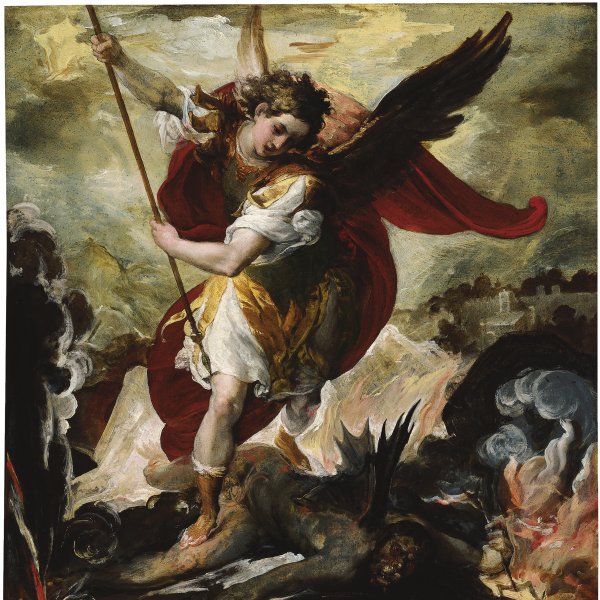Francesco Maffei
Vicenza, 1605 -Padua, 1660
Maffei lived in Vicenza for most of his life, although he also spent brief periods in other cities such as Brescia, Padua, Rovigo and Venice. Despite the lack of documentation regarding his training, it has been assumed that he initially worked with his father then continued his studies in the studio of Alessandro Maganza, a Mannerist artist in Vicenza. Maffei’s first works were influenced by Veronese and the Bassano, although he soon developed his own distinctive style that combines a Baroque richness and splendour with Mannerist elegance and artificiality. Individual characteristics of Maffei’s style include the highly dramatic mood and dazzling brushstroke produced by rapid strokes of brilliant colour. In 1638 the artist is documented in Venice, and this would prove to be a key period for his artistic evolution due to the contact that he made there with Strozzi, Fetti and Liss. Maffei undertook important commissions for fresco decorations in a number of churches. In the 1640s he was again in Vicenza where he executed major paintings such as The Translation of the Bodies of the Bishop Saints Dominatore, Paul and Anastasius, for the old cathedral in Brescia. He also painted a series of allegories in Rovigo and Vicenza, including an Allegory in Honour of Alvise Foscarini, which has been seen to reflect the influence of Rubens and Velázquez. Maffei also produced biblical and mythological scenes including Perseus and Medusa (Gallerie dell’Accademia, Venice). In the last period of his career his style became more dramatic and Baroque, and works from these years include two cycles in Vicenza for the Delle Zitelle and San Nicola di Tolentino oratorios. In 1657 he moved to Padua where he executed paintings for the churches of San Pietro Martire and San Tommaso. He died there in 1660.





